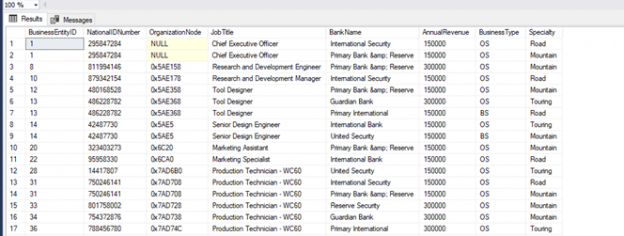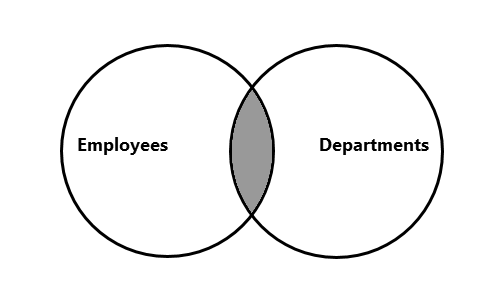This article explores the uses of the SET PARSEONLY SQL command for SQL Server queries.
Read more »



This article explores the uses of the SET PARSEONLY SQL command for SQL Server queries.
Read more »

This article gives you an insight into the SQL Truncate and SQL Delete commands behavior.
Read more »

What are SQL data types, why do we need them, and how to use them? Today, we’ll try to answer these questions by giving an overview of some most common data types used in SQL Server.
Read more »

In this article, we will seek an answer to an important question – “What is a foreign key in SQL Server?”. At the same time, we will give some seconder answers to this question. In this way, we can understand the foreign key concept more clearly.
Read more »

SQL AS keyword is used to give an alias to table or column names in the queries. In this way, we can increase the readability and understandability of the query and column headings in the result set.
Read more »

The best way how to explain what the INFORMATION_SCHEMA database is would be – “This is the database about databases. It’s used to store details of other databases on the server”. What does that mean, how we can use it, and what we can do with this data is the topic of today’s article.
Read more »

This article demonstrates different methods to attach SQL Server MDF files. First, let me explain about the database files.
Read more »

While working with raw data, you may frequently face date values stored as text. Converting these values to a date data type is very important since dates may be more valuable during analysis. In SQL Server, converting a string to date can be achieved in different approaches.
Read more »

XQuery in the SQL Server helps to query and extract data from XML documents. XQuery gives different approaches to get information from the XML document and the equivalent can be used on applying a data filter or where clause on XML elements as well.
Read more »

In this article, I am going to explain the PowerShell script to split a string into an array. Before I explain it, let me just give you a small introduction of the PowerShell and the PowerShell array.
Read more »

Delete operations over SQL XML should be possible with either erasing the XML document with the XML data type column or delete XML tag or attribute in the XML document using XQuery. The utilization of the XML data type with XQuery is tricky and significant in SQL Server.
Read more »

In my career, I’ve heard many times, things like “How to write a complex SELECT query?”, “Where to start from?” or “This query looks so complex. How you’ve learned to write such complex queries?”. While I would like to think of myself as of a brilliant mind or genius or add something like “query magician” to my social network profiles, well, writing complex SQL wouldn’t be the only thing required to do that. Therefore, in this article, I’ll try to cover the “magic” behind writing complex SELECT statements.
Read more »

In this article, I am going to explain how we can send an email from SQL Server express edition using a CLR stored procedure. First, let me explain about the CLR stored procedures.
Read more »

Database developers often need to convert a comma-separated value or other delimited items into a tabular format. Delimiters include pipe “|”, hash “#”, dollar “$” and other characters. SQL Server compatibility level 130, and subsequent versions, support a string_split() function to convert delimiter-separated values to rows (table format). For compatibility levels under 130, developers have previously done this with a user-defined function, which incorporates a While loop or Cursor to extract the data.
Read more »

The XML data type is a very common data type that is used to store unstructured or heterogeneous data in SQL Server. In this article, we will discuss the use of the XML data type along with its benefits, disadvantages, and limitations within various use cases.
Read more »

Today, data is the basis of any business. The world of enterprise computing is the epitome of data-driven businesses. The importance of structured storage of data is unquestionably in the focus. And at this time, with the computing model quickly shifting towards the cloud, and storage costs falling rapidly, enterprises are leveraging data more and more to tune their businesses.
Read more »

SQL has many cool features and aggregate functions are definitely one of these features, actually functions. While they are not specific to SQL, they are used often. They are part of the SELECT statement, and this allows us to have all benefits of SELECT (joining tables, filtering only rows and columns we need), combined with the power of these functions.
Read more »

SQL join multiple tables is one of the most popular types of statements executed while handling relational databases. As known, there are five types of join operations: Inner, Left, Right, Full and Cross joins.
Read more »

SQL Server collation refers to a set of character and character encoding rules, and influences how information is stored according to the order in the data page, how data is matched by comparing two columns, and how information is arranged in the T-SQL query statement. Collate SQL follows rules applied on a table when Select, Insert, Update or Delete operations are performed against contained data. Data always follows collation constraint rules, which are configured when creating an object.
Read more »

If you want to get something meaningful out of data, you’ll almost always need to join multiple tables. In this article, we’ll show how to do that using different types of joins. To achieve that, we’ll combine INNER JOINs and LEFT JOINs. So, let’s start.
Read more »

In this article, we’ll show how to create an XML data type document from a relational table utilizing different T-SQL ways. For example, for data migration, information from the SQL Server database can be exported and imported using XML in another framework. XML is a standard way of extracting, storing and manipulating data. One aspect of working with the XML data type is creating XML from relational information, which is done using the FOR XML provision in SQL Server:
Read more »

Microsoft SQL Server Server Management is an advanced development environment that enables us to configure, manage and administrate SQL Server database engines. SSMS is very popular and widely used by the database developers and administrators because of the following advantages:
Read more »

In this article, we are going to see how to use the CREATE VIEW SQL statement to create a view. This is the first article in a series that will be a programmatical approach of creating, altering and working with views using T-SQL. If you are a beginner and you don’t even know what a view is, don’t worry. We will kick off with a definition, and then move on to some basics like syntax, examples, use cases, etc.
Read more »

XQuery is a query language for XML. XML is a markup language that provides software and hardware-independent way of storing, transporting, and sharing data. In this case, XML documents are stored in a SQL Server database. XQuery is used to manipulate, find and extract information stored in the XML format. It’s analogous to SQL for databases.
Read more »

SQL cursor is one of the most popular database objects. It is used to retrieve data from the result set of an SQL query one row at a time. Even if the cursor is not recommended from a performance perspective, they are still widely used especially when handling a small amount of data.
Read more »© 2025 Quest Software Inc. ALL RIGHTS RESERVED. | GDPR | Terms of Use | Privacy